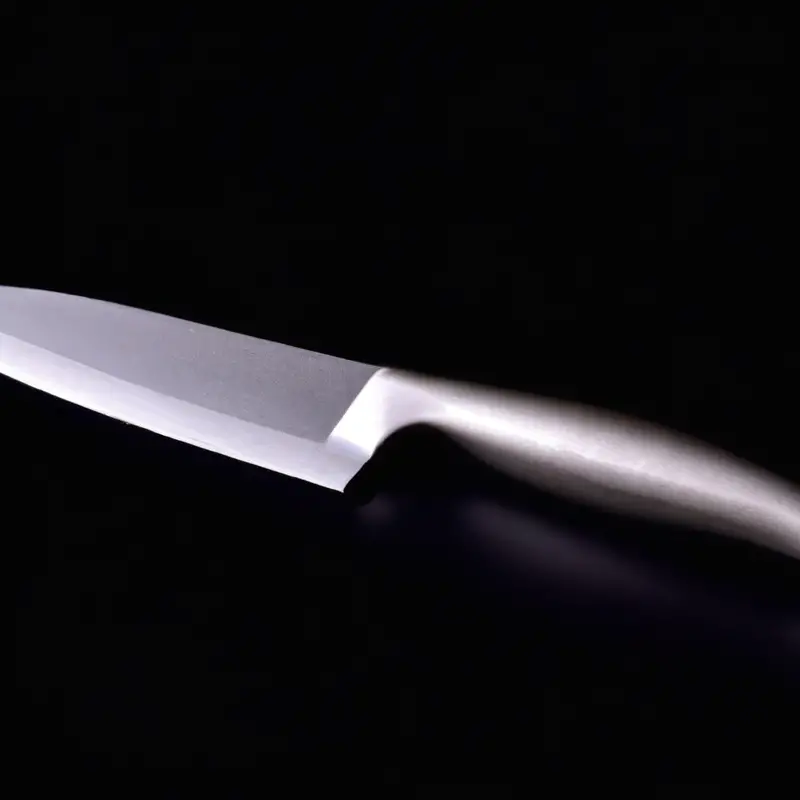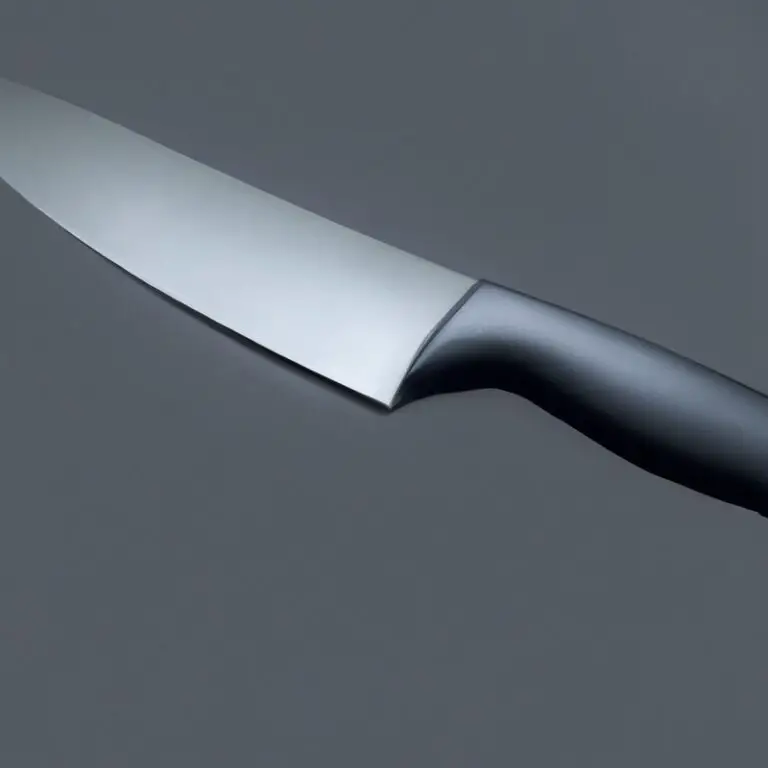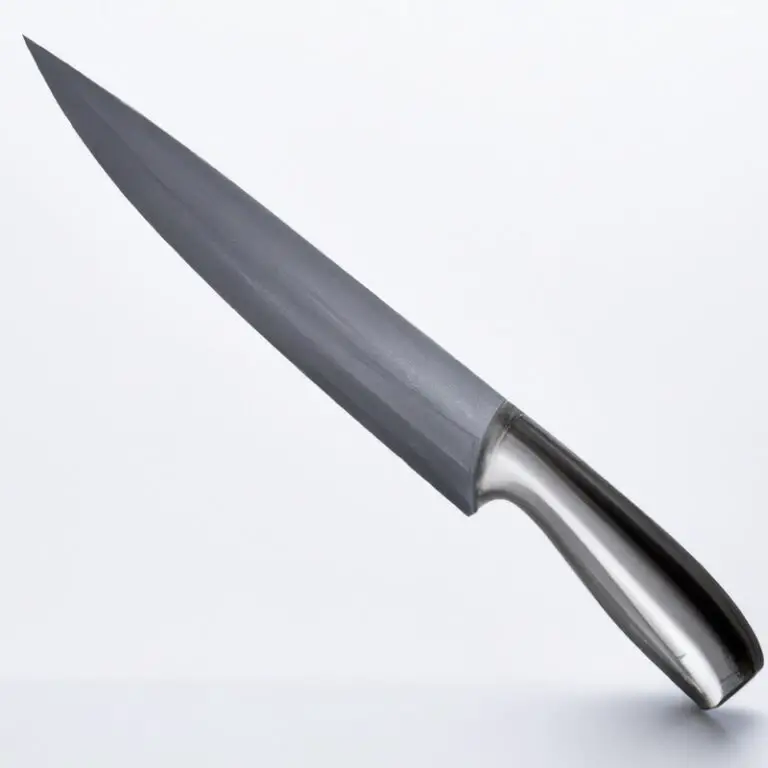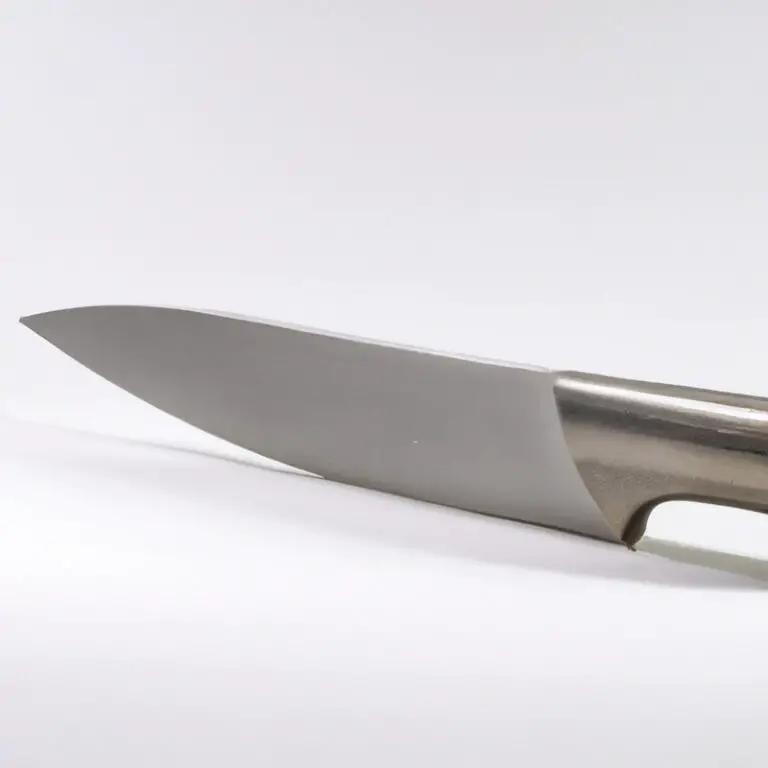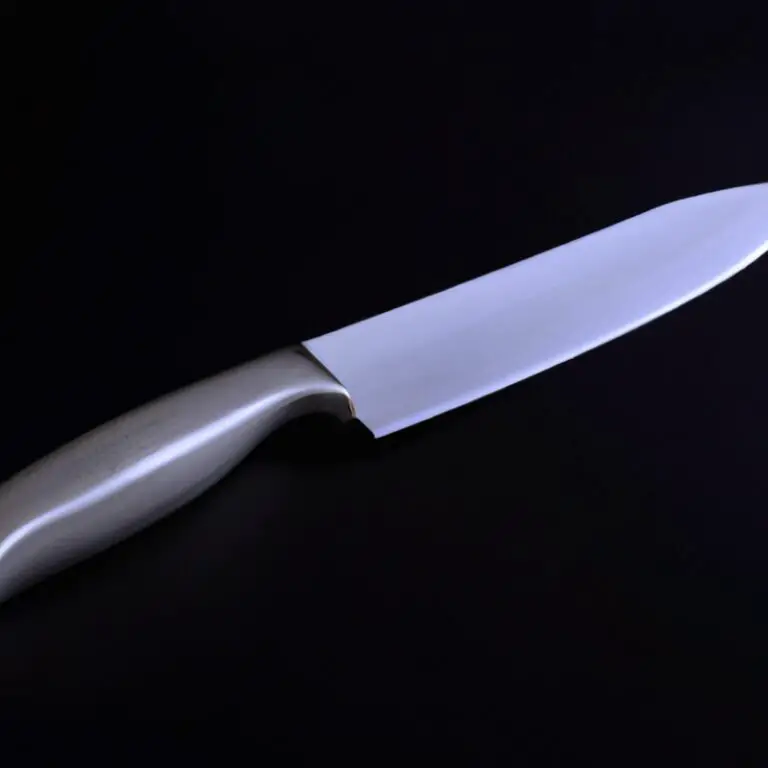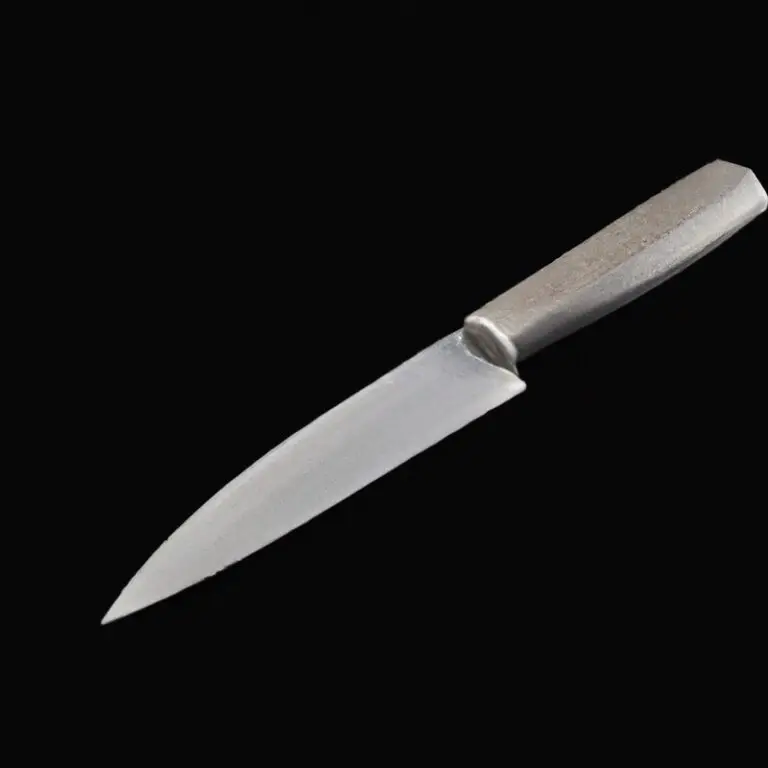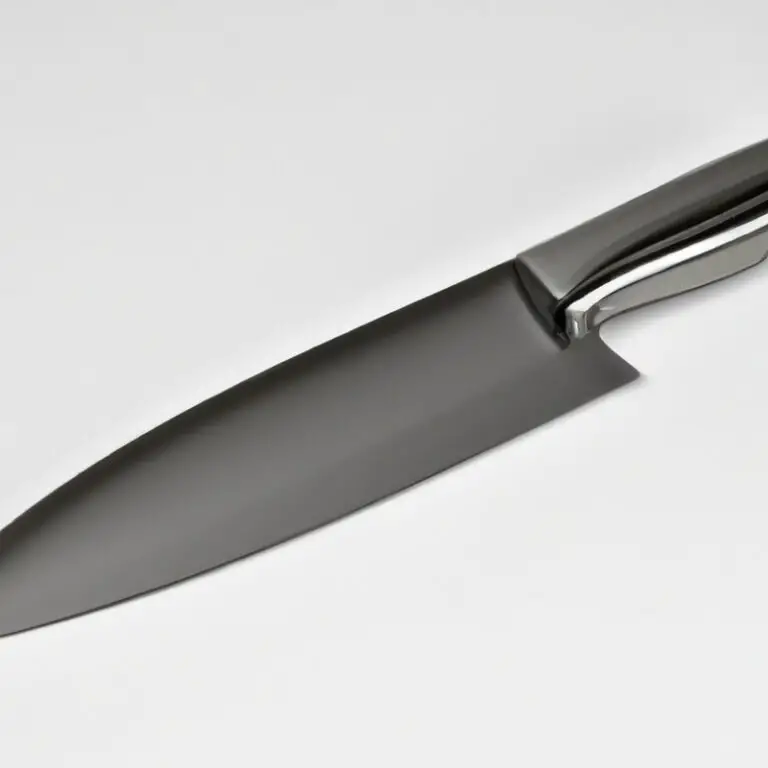How To Cut Through Delicate Ingredients With a Santoku Knife? Effortlessly
Key Takeaways:
- A Santoku knife is a versatile and efficient tool for slicing and chopping delicate ingredients like vegetables and seafood.
- To cut through delicate ingredients with a Santoku knife, use a smooth slicing motion and let the sharp blade do the work.
- Keep your Santoku knife sharp and well-maintained to ensure the best results and prevent damage to the blade.
- Proper technique and practice are essential for mastering the use of a Santoku knife and achieving precise, professional cuts.
Imagine this – you’re in the middle of preparing a meal, and you need to slice through delicate ingredients like tomatoes or fish, but your knife is just not doing the job! It’s frustrating and time-consuming. But fear not, because in this guide, I’ll show you how to use a Santoku knife to cut through tender and delicate ingredients like a pro.
We’ll cover the basics of the Santoku knife, how it compares to other knives, maintenance tips, and cutting techniques, so you can achieve precision and accuracy with every cut.
Get ready to elevate your kitchen skills with this guide!
| Santoku Knife | Cutting Technique |
|---|---|
| Blade Shape | The thin flat blade of a Santoku knife is perfect for slicing through delicate ingredients without damaging them. |
| Angle | Hold the knife at a 15 to 20-degree angle and use a gentle back-and-forth motion to slice through the ingredient. |
| Pressure | Apply light pressure when cutting delicate ingredients to avoid crushing or bruising them. |
| Speed | A slow and steady cutting motion is recommended to ensure precise cuts and avoid slipping. |
Understanding the Basics of a Santoku Knife: A Guide for Home Cooks
A Santoku knife is a Japanese-style knife that is versatile and well-suited for various kitchen tasks, including cutting through delicate ingredients. It typically has a shorter blade than a traditional chef’s knife, which allows for better control and precision when working with smaller items.
Santoku knives also feature a flat edge and a granton edge, which helps reduce friction and prevents food from sticking to the blade while cutting.
To make the most of your Santoku knife when preparing delicate ingredients, it’s essential to maintain the blade’s sharpness through regular sharpening. You should also practice proper hand placement and utilize the rocking motion technique for clean, efficient cuts.
Choosing the right cutting board and using safety precautions while handling the knife are equally important.
In summary, understanding the basics of a Santoku knife is critical for home cooks who want to prepare delicate ingredients like a professional chef. By mastering the correct hand placement, sharpening technique, and cutting method, you can achieve precision, accuracy, and efficient cuts every time.
Santoku Knife vs. Other Knives: Which One Should You Use for Delicate Ingredients?
When it comes to cutting delicate ingredients, a Santoku knife is often the best choice. Unlike other knives, the Santoku knife’s flat edge and shorter blade make it easier to maneuver, resulting in cleaner cuts and less damage to the ingredient.
The wider blade also prevents thin slices from sticking to the blade and tearing, making it ideal for slicing soft fruits and vegetables like tomatoes and avocados.
While other knives such as the chef’s knife or paring knife can also be used for delicate ingredients, they may not provide the same level of precision and control as the Santoku knife. Ultimately, the choice of knife depends on personal preference and the specific task at hand, but for delicate ingredient preparation, the Santoku knife is a reliable and efficient tool.
Sharpening Your Santoku Knife: Maintenance Tips for Clean Cuts
To maintain peak performance for your Santoku knife and ensure clean cuts, it’s crucial to keep it sharpened. A dull blade can damage delicate ingredients and make cooking tasks more difficult.
Sharpen your Santoku knife regularly, using a sharpening stone or honing steel.
Hold the knife at a 20-degree angle and glide it across the stone or steel, maintaining consistent pressure. Remember to sharpen both sides of the blade evenly.
After sharpening, wipe the blade clean and store it safely in a knife block or sheath.
With proper maintenance, your Santoku knife will remain a reliable tool in your kitchen for years to come.

Techniques for Cutting Soft and Tender Ingredients with a Santoku Knife
When it comes to cutting soft and tender ingredients with a Santoku knife, there are specific techniques to ensure clean cuts and prevent bruising. Start by slicing with a gentle sawing motion to avoid squishing delicate items like tomatoes or avocados.
For larger items like herbs or greens, use a “chiffonade” technique by rolling and slicing the leaves into thin ribbons.
To dice onions or garlic, first cut in half and remove the ends before using a rocking motion to chop into small pieces. When cutting protein like fish or tofu, hold the knife at a slight angle and use a gentle sawing motion to avoid breaking the delicate texture.
Remember to always use a sharp knife and keep your fingers tucked away from the blade while cutting.
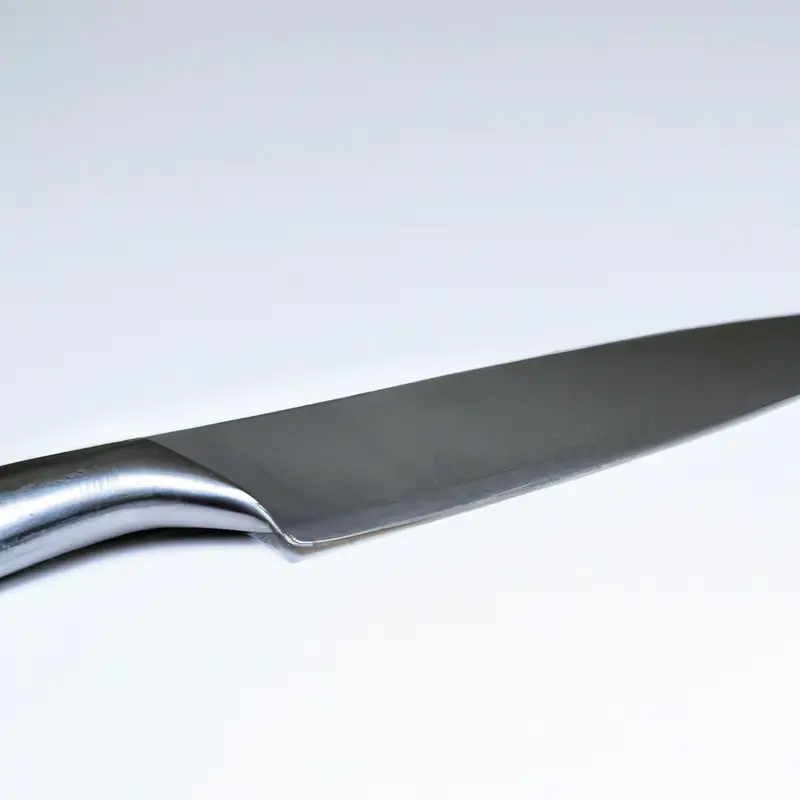
How to Slice, Chop, and Dice Vegetables with a Santoku Knife
To slice, chop, and dice vegetables with a Santoku knife, follow these steps:
- Choose the right size vegetable for your knife and cutting board.
- Use a claw grip to hold the vegetable in place while cutting.
- Use a slicing motion to cut through the vegetable.
- For chopping, use a rocking motion to move the knife up and down quickly.
- To dice, slice the vegetable horizontally and then vertically.
- For precision cuts, use the tip of the knife.
- Use a clean, honed blade for the best results.
Remember to always practice safety when handling knives in the kitchen.
The Importance of Proper Hand Placement When Using a Santoku Knife
Proper hand placement is crucial when using a Santoku knife to cut delicate ingredients. To ensure you have the best control over the blade, your hand should grip the handle firmly, with your thumb and index finger on either side of the spine.
The rest of your fingers should then wrap around the handle for support.
Additionally, always keep your fingertips tucked in and away from the blade when cutting. This will prevent any accidents and also ensure that you are slicing through the ingredient evenly.
Remember, using a Santoku knife can be more comfortable and efficient than using other knives.
However, improper hand placement risks accidents and reduces the quality of the cut. Always keep your hand and fingers away from the path of the blade and maintain a firm grip on the handle to achieve the best results.
Applying the Rocking Motion Technique for Perfect Cuts Every Time
To achieve perfect cuts every time with a Santoku knife, it’s essential to apply the rocking motion technique. This technique involves using a smooth back and forth motion to cut through delicate ingredients like herbs, tomatoes, and other soft vegetables.
First, place the knife on the cutting board and use the heel of the knife to begin the cut.
Apply pressure while lifting the handle upwards, and as you move forward, push the knife down towards the board with the tip of the blade, while keeping the blade in contact with the ingredients. Keep repeating the back and forth motion in a gentle rocking motion and maintain an even thickness of cuts throughout.
For larger items like squash or potatoes, start with the tip of the knife and use the blade’s full length to chop through the vegetable while maintaining the rocking motion.
The rocking motion technique helps to prevent bruising and tearing delicate ingredients while producing consistent cuts. With practice, you can achieve perfect cuts every time and make your dishes look and taste great.
Choosing the Right Cutting Board for Your Santoku Knife
When it comes to choosing the right cutting board for your Santoku knife, there are a few things to consider. Firstly, avoid glass, marble, or ceramic cutting boards as they can dull your knife’s edge.
Instead, opt for wooden or plastic cutting boards to preserve the sharpness of your blade.
Wooden cutting boards are a classic option and are gentle on your knives, but they require more maintenance as they are porous and can absorb bacteria if not properly cleaned. On the other hand, plastic cutting boards are low maintenance and easy to clean, but they tend to develop many cuts and grooves over time, which can harbor bacteria.
When selecting a cutting board, make sure it’s large enough to comfortably accommodate your Santoku knife so that you have enough space to work with.
Ideally, choose a board with non-slip material at the base or use a damp towel underneath to prevent slips and accidents. Lastly, consider having a separate cutting board for your delicate ingredients like sushi or fish to avoid cross-contamination.
Overall, choosing the right cutting board is essential to maintain the sharpness of your Santoku knife and ensure precision in your cuts.
Achieving Precision and Accuracy when Cutting Delicate Ingredients with a Santoku Knife
Achieving precision and accuracy when cutting delicate ingredients with a Santoku knife requires proper technique and attention to detail. It’s important to use the correct cutting motion, such as a gentle slicing motion, to avoid crushing or tearing the ingredient.
Additionally, keeping the blade sharp and using a smooth, fluid motion can help ensure clean cuts.
It’s also important to maintain proper hand placement and use a cutting board that provides a stable surface. By practicing these techniques and taking care to handle the knife properly, you can achieve precise cuts on even the most delicate ingredients with a Santoku knife.
Safety Tips When Handling a Santoku Knife in the Kitchen
Safety Tips When Handling a Santoku Knife in the Kitchen:
- Always hold the knife by the handle with a firm grip while cutting.
- Make sure the cutting surface is stable and your cutting board is non-slippery.
- Use your non-dominant hand to hold the ingredient while cutting, keeping your fingers curled under to avoid cuts.
- Always cut away from your body and avoid cutting too quickly or forcefully.
- Keep the knife sharp to avoid slipping, and use a knife guard when storing.
- Never leave a knife unattended, always put it away when not in use.
- If the knife falls or tips, don’t try to catch it, and try to avoid using a knife while sitting down or in a confined space.
These safety tips are essential when working with a Santoku knife in the kitchen to prevent accidents and injuries. By following them, you can ensure safe and enjoyable use of your Santoku knife for years to come.
Final Verdict
Mastering the art of cutting through delicate ingredients with a Santoku knife may take time and practice, but the results are well worth it. By understanding the proper techniques and maintenance tips, you can improve your knife skills and elevate your dishes to the next level.
Remember to use proper hand placement, apply the rocking motion technique, choose the right cutting board, and prioritize safety when handling a Santoku knife in the kitchen.
With these insights and takeaways, you can confidently approach your next recipe and impress your guests with your precision and accuracy. Trust in the reliability of this information, and put it into action to enhance your cooking experience.
Happy chopping!

